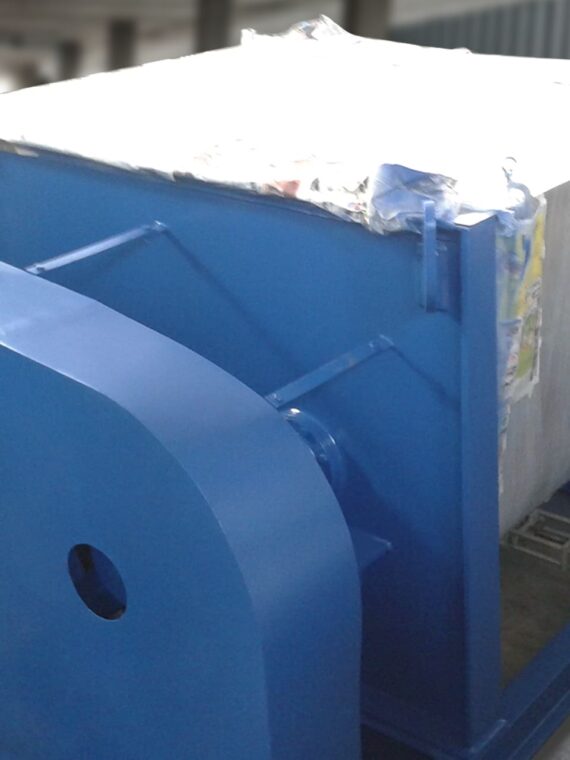Chemical storage tanks are essential in significant industries, including manufacturing, agriculture, pharmaceuticals, and petrochemicals. They are installed for handling and storing hazardous materials with minimal risks to human health and the environment. This article further explains how chemical storage tanks are crucial for safety, compliance with the stipulated regulations, and provides codified guidelines for minimizing material handling hazards.
Role of Chemical Storage Tanks
Chemical Storage Tanks are employed for several purposes;
- Storage: According to the Environmental Protection Agency (EPA), improper storage of hazardous materials contributes to approximately 40% of all reported environmental contamination incidents. The primary role of chemical storage tanks is to keep the dangerous substances safe, not to spill or leak and cause a disaster.
- Stability: Chemical tanks provide a stable environment, which shelters chemicals from sudden changes in temperature and extraneous impurities.
- Access: Well-designed chemical tanks allow easy access for monitoring, maintenance, and transfer activities. In industries like petrochemicals, integrating real-time monitoring systems in modern tank designs can reduce the risk of accidents by about 30%.
- Compliance with legal requirements: they ensure that companies satisfy legal requirements to contain material handling hazards, eliminating legal repercussions.
Safety Features of Chemical Storage Tanks
The first and foremost purpose of chemical storage tanks is to prevent leaks and avoid adverse consequences. The general safety features of storage tanks include;
Double-Wall Construction
Most tanks are double-walled, comprising an inner and an outer wall. That endows the advantages of safety against leakage. Where the inner wall is broken, the outer one would contain spillage. Double-walled tanks minimize environmental impact and are specifically helpful for storing corrosive or volatile fluids.
Automatic Shut-Off Valves
These valves stop flow at an approved level to avoid overflows, reducing the chances of spills during filling operations. In addition to preventing overflows, the valves can also be used with intelligent monitoring and alarm systems if a malfunction is suspected. According to the American Petroleum Institute (API), integrated shut-off valves and smart monitoring systems can reduce the likelihood of overflows by up to 50%.
Pressure Relief Valves
These valves control and restrict pressure inside tanks, preventing explosion or rupture due to excessive pressure build-ups. Chemical industry reports suggest installing pressure relief valves has decreased tank explosions by approximately 70% since the 1990s. They also ensure the safe release of excess pressure, maintaining the tank’s integrity.
Monitoring Systems
Advanced tanks can have sensors and alarms that track temperature and pressure. Such systems can warn operators of any system failures or anomalies, ensuring swift before things go out of hand; according to a 2023 report by MarketsandMarkets, the global intelligent tank market is expected to grow by 8.6% annually due to increasing demand for monitoring systems that enhance safety.
Fire Protection Features
Many chemical storage tanks also feature numerous other attributes, such as monitors and control systems that can detect and reduce some of the hazards of fires from volatile liquids. For instance, these may automatically activate foam suppression systems or water spray systems to limit fire damage.
Read Also: Beyond Containment: Storage Tanks in Industrial Processes
Compliance with Safety Regulations
It is critical for industries handling hazardous materials to abide by the necessary safety regulations. The following bodies provide comprehensive guidelines on the design and operations of chemical storage tanks:
Occupational Safety and Health Administration (OSHA)
OSHA issues standards for workplace safety in chemical handling and storage, with recommendations on appropriate labelling, employee training, and equipment maintenance. Compliance by OSHA protects workers’ and employers’ liability.
Environmental Protection Agency (EPA)
The EPA regulates hazardous waste management through legislation like the Resource Conservation and Recovery Act (RCRA). It lays down safe, proper storage requirements, which promote human health and environmental protection. Facilities must maintain accurate records of their chemical inventories and strictly adhere to hazardous waste disposal procedures.
American Petroleum Institute (API)
API provides standards for designing, constructing, and maintaining storage tanks for use in the petroleum industry. Such standards ensure that safety requirements are met and best practices are employed when handling the tanks. Studies suggest that compliance with API standards can result in a 40% overall reduction in tank failure incidents.
Environmental Protection
Chemical storage tanks ensure environmental protection by preventing chemical leaks that can contaminate soil and water. Features of environmental protection include;
Secondary Containment Characteristics
Most tanks have secondary containment that catches any spill or leak before it reaches the environment. Secondary containment is a profound characteristic when storing corrosive or hazardous products. It takes many forms and shapes, such as dikes or berms to ensure that leaked substances are contained within an assigned area.
Bulk Handling Characteristics
Chemicals stored in a higher-quantity tank instead of numerous smaller tanks facilitate easier handling. Bulk storage ensures minimal transportation between containers, thereby reducing spilling and simplifying logistics management. The American Chemistry Council estimates that bulk chemical handling reduces transportation-related spills by 25%, significantly lowering operational costs.
Conclusion
Chemical storage tanks play a critical role in handling hazardous and reactive materials. They ensure material and environment safety through highly advanced safety features to prevent leakage and spills, strictly following regulatory standards. Today’s Industries should invest in quality chemical storage solutions to protect employees from hazards, keep the environment clean, and increase operational efficiency.
Companies seeking expert guidance or support in designing and fabricating chemical storage tanks must work with experienced professionals who understand the complexities of handling hazardous materials. To explore tailored solutions for your storage needs, you can reach out via our website or email your inquiries at sales@stalwartint.com. We are here to assist you in implementing the best practices for chemical storage and handling.


















